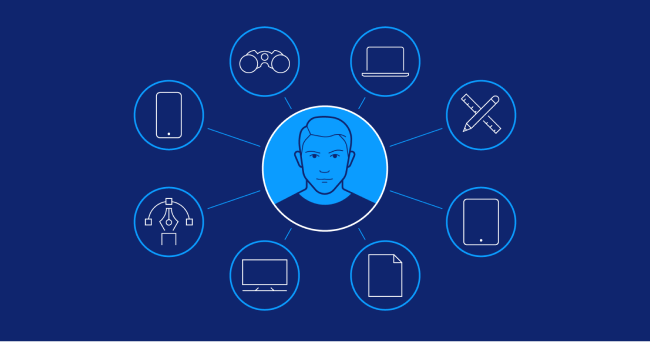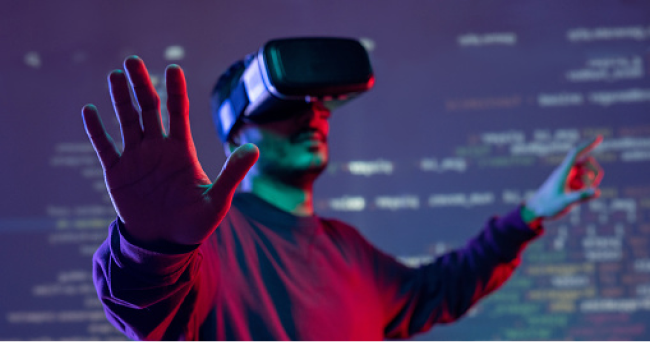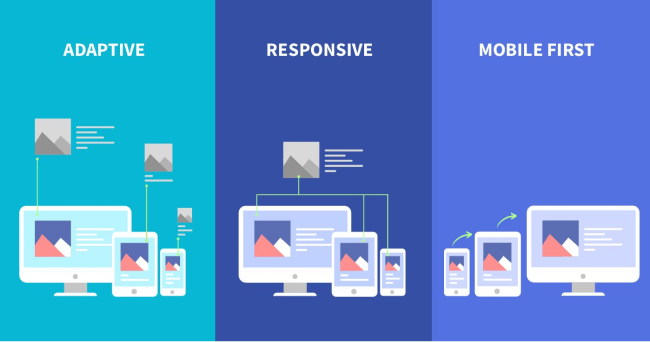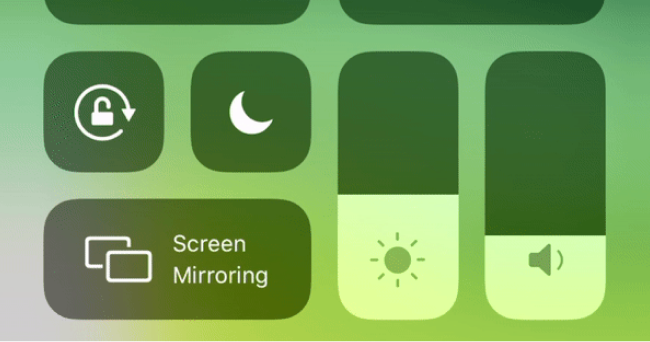As we approach 2024, the world of UI UX design is evolving rapidly. With new technologies, changing user preferences, and emerging design trends, designers must stay up-to-date to deliver exceptional digital experiences. In this section, we will explore the top 10 UI UX trends that will shape the design landscape in 2024. From user experience technology to web and mobile responsiveness, and micro-interactions, these trends will have a significant impact on how designers create interfaces that engage and delight users.
1. User-Centric Design for Enhanced UX

User-centric design puts the user at the forefront of the design process, placing their needs and expectations at the center of every decision. This approach prioritizes the importance of understanding user behavior and psychology, ensuring that interfaces and experiences are intuitive and easy to navigate.
By taking a user-centric approach, designers can create interfaces that are tailored to their target audience, resulting in improved engagement and user satisfaction. This, in turn, can lead to increased customer loyalty and repeat business.
Through constant user research, designers can gain insights into user needs and preferences, allowing them to make informed design decisions. Additionally, user testing and feedback can help to identify pain points and areas for improvement, ensuring that the final product is optimized for a seamless user experience.
2. Innovative Technologies for Seamless UI UX

The use of innovative technologies is driving significant changes in UI UX design. These technologies are transforming the way that we interact with digital products, from websites to mobile applications. In this section, we will explore some of the most exciting and impactful innovations that are shaping the landscape of UI UX in 2024.
a. Artificial Intelligence
Artificial intelligence (AI) is becoming increasingly prevalent in UI UX design, as it provides a means of creating interfaces that can learn and adapt to user behavior. AI-powered interfaces can create highly personalized user experiences, improving user engagement and satisfaction. For instance, a smart chatbot that uses AI technology can provide users with real-time responses to their queries, making interactions more responsive and intuitive.
b. Virtual and Augmented Reality
Virtual and augmented reality (VR/AR) are transforming the way that users interact with digital products, creating immersive experiences that feel almost like the real thing. From virtual showrooms for eCommerce websites to immersive games, VR/AR technology is creating new ways for users to engage with brands and products. UI UX designers can use VR/AR to create highly interactive and engaging experiences that break the boundaries of traditional interfaces.
c. Internet of Things
The Internet of Things (IoT) is a network of devices and objects that are connected to the internet, providing a wealth of data that can be used to create more intuitive and personalised user experiences. IoT devices can provide users with real-time data on everything from environmental conditions to their own health and wellness. UI UX designers can use this data to create interfaces that respond to user needs in real-time, creating experiences that are both seamless and intuitive.
3. Responsive Design for Mobile-First Experiences

With the number of mobile device users growing every year, it is essential for UI UX designers to prioritize responsive design. This approach ensures that digital products seamlessly adapt to different screens and provide a consistent and user-friendly experience.
Designing for mobile-first experiences means creating interfaces and interactions with smaller screens in mind. By doing so, designers can focus on what is essential and craft more straightforward, efficient, and intuitive experiences. Once the core elements are defined, designers can scale up to larger screens, adding additional features where appropriate.
a. Designing for Flexibility and Adaptability
Designing for mobile-first also means building in flexibility and adaptability. This approach allows digital products to serve users across devices, ensuring a seamless experience across platforms, whether on desktop, tablet, or mobile. Responsive design frameworks, such as Bootstrap and Foundation, can help designers streamline the development process while ensuring compatibility across a wide range of devices.
b. Virtual and Augmented Reality
Virtual and augmented reality (VR/AR) are transforming the way that users interact with digital products, creating immersive experiences that feel almost like the real thing. From virtual showrooms for eCommerce websites to immersive games, VR/AR technology is creating new ways for users to engage with brands and products. UI UX designers can use VR/AR to create highly interactive and engaging experiences that break the boundaries of traditional interfaces.
c. Optimizing Load Times
Another essential factor in mobile-first design is optimizing load times. Mobile users expect fast, streamlined experiences, and long load times can quickly lead to frustration and abandonment. Designers can optimize load times by minimizing unnecessary elements, compressing images, and using caching and compression techniques.
By prioritizing responsive design and mobile-first experiences, UI UX designers can ensure that digital products are accessible and user-friendly for all, regardless of device or location. This approach not only provides a better experience for users but can also help drive business success and growth.
4. Micro Interactions: Enhancing User Engagement

Micro interactions refer to small, subtle animations and feedback that occur when a user interacts with a digital product. These interactions play a significant role in enhancing user engagement and creating a delightful user experience.
When micro interactions are well-designed and executed, they provide users with instant feedback and a sense of control, making them feel more invested in the product and ultimately more satisfied. For example, a button that changes color or shape when clicked provides visual confirmation to the user that their action was successful.
a. Types of Micro Interactions
There are many different types of micro interactions that can be incorporated into UI UX design, such as:
- Hover effects
- Progress bars
- Animated icons
- Modal windows
- Notifications
Each of these interactions serves a specific purpose and can be used to guide the user through the product or highlight important features.
b. The Benefits of Micro Interactions
Micro interactions offer a range of benefits for both users and businesses, including:
- Enhanced user engagement and satisfaction
- Improved product usability
- Increased user retention and loyalty
- Higher conversion rates
When micro interactions are used effectively, they can provide users with a seamless and enjoyable experience, leading to increased brand trust and customer loyalty. This can ultimately translate into higher revenue and business success.
As such, micro interactions are a crucial aspect of UI UX design that should not be overlooked.
If you are new to UX
What are UI UX trends?
UI UX trends are the latest design practices and approaches that influence the user interface (UI) and user experience (UX) of digital products. These trends help designers create more innovative, intuitive, and engaging experiences for users.
How can user-centric design enhance UX?
User-centric design focuses on understanding and prioritizing the needs of users in the design process. By considering user preferences, behaviors, and expectations, designers can create interfaces and experiences that are tailored to the target audience, resulting in enhanced user satisfaction and engagement.
What are some innovative technologies in UI UX design?
There are several innovative technologies revolutionizing UI UX design, such as AI-powered interfaces that can provide personalized recommendations and experiences, virtual and augmented reality that offer immersive interactions, and voice-enabled assistants that enable hands-free navigation. These technologies are shaping the future of user experiences.
Why is responsive design important for mobile-first experiences?
Responsive design ensures that a website or application can adapt and provide an optimal user experience across different devices and screen sizes. With mobile usage on the rise, designing for mobile-first experiences is crucial to meet the needs of users who primarily access digital products through their smartphones or tablets.
How do micro interactions enhance user engagement?
Micro interactions are small, subtle animations or feedback that occur in response to user actions, such as liking a post or receiving a notification. These interactions create a sense of interactivity and responsiveness, making the user experience more engaging and enjoyable. They add personality and delight to the overall design.
Key Takeaways
- Designers must keep up-to-date with the latest trends to deliver exceptional digital experiences in 2024.
- User experience technology, web and mobile responsiveness, and micro-interactions are key areas of focus in UI UX design.
- Staying user-centric is essential for creating interfaces and experiences that prioritize user needs and expectations.
- Emerging technologies, including AI-powered interfaces and virtual and augmented reality experiences, are revolutionizing UI UX design.
- Responsive design that prioritizes mobile-first experiences is crucial for adapting to changing user preferences.
- Micro-interactions play a significant role in enhancing user engagement and creating a delightful user experience.



